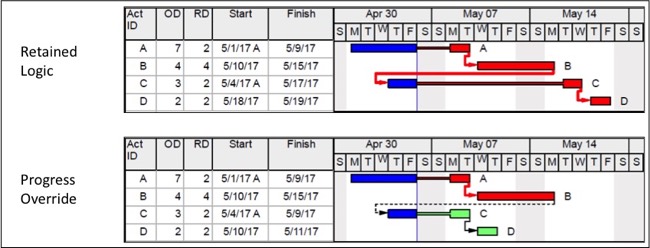Criticism of the ASCE Schedule Delay Analysis Offsetting Delay Concept
At the recent 2018 AACE International Conference and Expo, Mark Nagata presented his paper criticizing the ASCE Schedule Delay Analysis’s offsetting delay concept. The paper’s abstract is below.
Abstract
The American Society of Civil Engineers (ASCE) published its Schedule Delay Analysis Standard in August 2017. Not as ambitious as AACE’s Recommended Practice for Forensic Schedule Analysis, ASCE’s Standard is largely composed of concepts pioneered, proven, and standardized by others. However, the Standard includes an unproven concept – offsetting delay. Offsetting delay is controversial, both, because it is unproven and, because it is biased towards the interests of contractors.
The concept of offsetting delay states that an owner may be required to grant the contractor a time extension for an owner-caused, non-critical-path delay at any point during the project. This aspect of the concept modifies what has long been one of the basic laws of time extensions – the contractor is only entitled to a time extension to the project completion date when an excusable delay delays the project’s critical path and forecast completion date.
The ASCE’s concept of offsetting delay is biased against the interests of the owner because it provides a time extension for non-critical-path delays to contractors, but does not provide relief to the owner from the contractor’s delay costs in identical circumstances. This paper evaluates the issues of criticality, concurrency, the redefinition of key terms, and other aspects of the ASCE Schedule Delay Analysis Standard’s offsetting delay concept in arguing for its removal from the standard.

 There are several perceived advantages to using design-build. In this Ideas & Insights, I want to look at those potential advantages from the perspective of the owner. Even if you are a contractor, I think it’s important, when discussing design-build, to consider the owner’s perspective.
There are several perceived advantages to using design-build. In this Ideas & Insights, I want to look at those potential advantages from the perspective of the owner. Even if you are a contractor, I think it’s important, when discussing design-build, to consider the owner’s perspective.